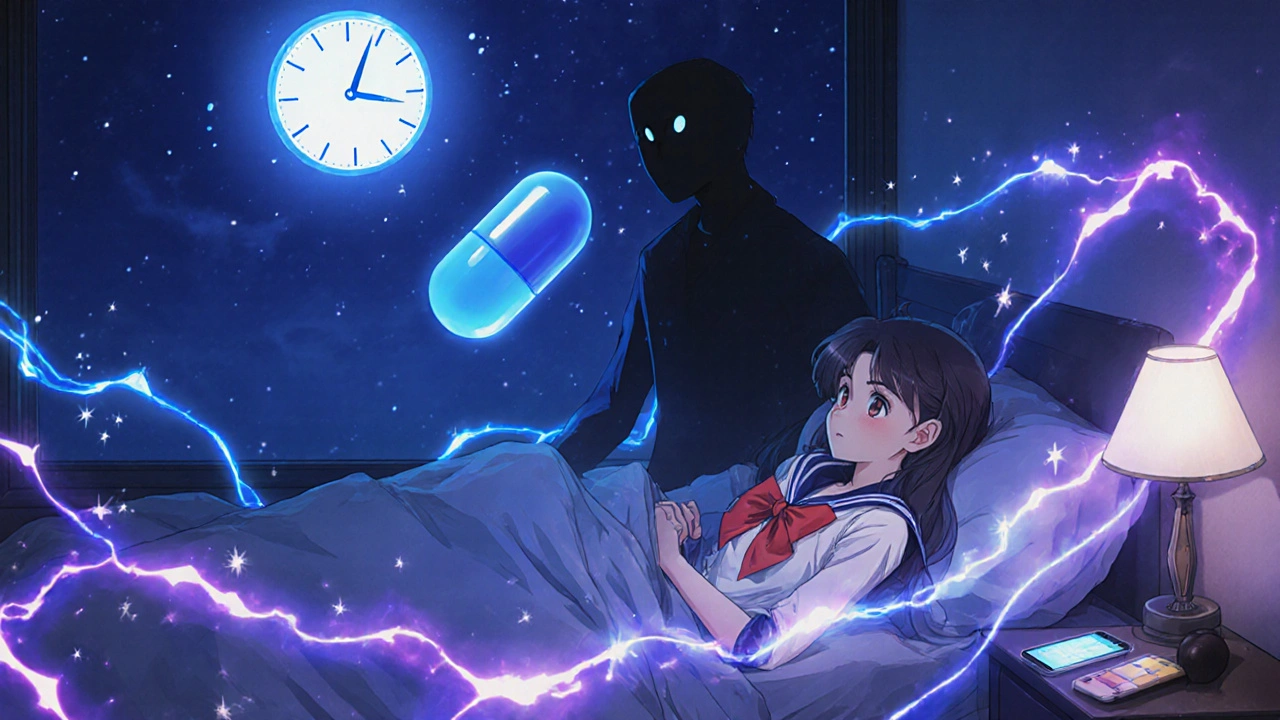Insomnia: Understanding Causes, Medication Effects, and Practical Relief
When dealing with insomnia, a persistent difficulty falling or staying asleep that can impair daily life. Also known as sleep disorder, it often signals underlying health issues, lifestyle habits, or medication side effects. Recognizing the root cause is the first step toward better rest.
If you’re battling insomnia, you’ll notice a pattern: a restless mind, early awakenings, or a night that never feels long enough. That pattern usually ties back to three big drivers – physiological disruptions, drug‑induced effects, and daily habits. Connecting these dots helps you choose the right fix rather than guessing.
Medication‑Induced Insomnia: The Corticosteroid Connection
Methylprednisolone is a potent corticosteroid used to reduce inflammation in conditions like arthritis or asthma. While it does its job fighting swelling, it can also scramble your body’s natural cortisol rhythm, which directly interferes with the sleep‑wake cycle. The result? Trouble falling asleep, frequent night awakenings, or lighter sleep stages.
It’s not just methylprednisolone; the whole class of corticosteroids, including prednisone and dexamethasone, share this side‑effect profile. The timing of the dose matters a lot – taking them late in the day often spikes alertness when you want to wind down. Adjusting the schedule to morning or early afternoon can blunt the insomnia trigger without sacrificing therapeutic benefit.
Beyond corticosteroids, many other drugs – from certain antihistamines to beta‑blockers – can sneakily impact sleep. The common thread is that they alter neurotransmitters or hormone levels that govern nighttime rest. Checking a medication’s side‑effect list for “sleep disturbance” or “insomnia” is a quick way to spot a possible culprit.
When you suspect a drug is the cause, talk to your prescriber about alternatives, dose adjustments, or a short‑term sleep aid. Never stop a prescribed medication without professional guidance, but a simple change in timing or formulation can make a huge difference in sleep quality.
Sleep Hygiene: Simple Practices That Counteract Insomnia
Sleep hygiene refers to a set of evidence‑based habits that promote natural, uninterrupted sleep. Think of it as a nightly routine checklist: dim the lights an hour before bed, avoid screens that emit blue light, keep the bedroom cool (around 65°F), and reserve the bed for sleep and intimacy only.
Consistent sleep‑wake times are a cornerstone. Even on weekends, try to rise and retire within the same hour window. Your internal clock, or circadian rhythm, thrives on regularity; erratic schedules send mixed signals that can exacerbate insomnia, especially when combined with stimulant medications.
Nutrition plays a silent role too. Heavy meals, caffeine, or alcohol close to bedtime can fragment sleep architecture. A light snack with tryptophan‑rich foods (like turkey or nuts) may help, but keep quantities modest to avoid digestion‑related wake‑ups.
Physical activity is another lever. Regular exercise improves sleep depth, but timing matters – vigorous workouts right before bed can raise adrenaline levels and delay sleep onset. Aim for morning or early afternoon sessions for the best insomnia‑fighting effect.
Finally, manage stress with relaxation techniques. Deep breathing, progressive muscle relaxation, or a brief mindfulness practice can quiet the racing thoughts that often keep people awake. Pair these with a dark, quiet environment, and you’ll give your brain a clear cue that it’s time to shut down.
Beyond Medicine: Other Strategies to Tackle Insomnia
Cognitive‑behavioral therapy for insomnia (CBT‑I) is the gold‑standard non‑pharmacologic treatment. It addresses the thoughts and behaviors that perpetuate sleeplessness, teaching you to restructure night‑time anxieties and develop healthier sleep habits. Even a few sessions can yield long‑lasting improvements without drug side effects.
If lifestyle tweaks aren’t enough, short‑term use of over‑the‑counter melatonin can help reset the circadian clock, especially for shift workers or travelers crossing time zones. Stick to low doses (0.5‑3 mg) taken 30‑60 minutes before bedtime, and avoid combining it with other sedatives unless a doctor advises otherwise.
In some cases, a prescription sleep aid may be appropriate for a limited period while you work on underlying habits. The key is to use it as a bridge, not a permanent crutch, and to taper off under medical supervision.
Each of these approaches—adjusting medication timing, reinforcing sleep hygiene, and incorporating behavioral therapies—targets a different piece of the insomnia puzzle. Together they form a comprehensive plan that respects both the chemical and behavioral roots of sleeplessness.
Now that you’ve got a clear picture of what drives insomnia and how to counteract it, explore the articles below. You’ll find deep dives on steroid‑related sleep issues, practical dosing tips, and extra lifestyle tricks to help you finally catch those restorative Z‑zz’s.

